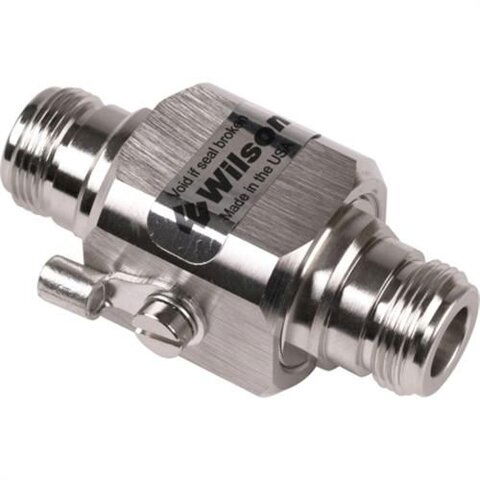Hi Guys,
I realize this question has been asked a million times, but here goes:
My OTA antenna is mounted on a 5' mast, on a tripod at the peak of my roof.
(My roof is 30' from the ground)
I have a 3 year old 2 storey home with a very steep roof pitch.
I chose to run the coax cable neatly under the shingle cap (at the ridge of the roof).
The cable goes into the attic and down a conduit (central vac pipe) that the builder installed.
This conduit goes from the attic directly through both levels of my house then to the basement where the panel is located.
I did not want to run the cable down the hip and then beside the downspout or down the brick for many reasons mainly for appearance.
If I run the ground cable along the top of the roof to the closest point where I can bring it down, the ground cable length will be 40 to 50 feet long.
I was thinking of running the ground wire to the panel where the main ground block is located or from the panel back outside the house to a ground rod.
If I run the ground wire down the conduit (in the same path as the coax) the ground wire will be 80 - 90 feet long. Is this acceptable or should I just forget about grounding it?
I can post pictures of installation if requested.
Any suggestions?
I realize this question has been asked a million times, but here goes:
My OTA antenna is mounted on a 5' mast, on a tripod at the peak of my roof.
(My roof is 30' from the ground)
I have a 3 year old 2 storey home with a very steep roof pitch.
I chose to run the coax cable neatly under the shingle cap (at the ridge of the roof).
The cable goes into the attic and down a conduit (central vac pipe) that the builder installed.
This conduit goes from the attic directly through both levels of my house then to the basement where the panel is located.
I did not want to run the cable down the hip and then beside the downspout or down the brick for many reasons mainly for appearance.
If I run the ground cable along the top of the roof to the closest point where I can bring it down, the ground cable length will be 40 to 50 feet long.
I was thinking of running the ground wire to the panel where the main ground block is located or from the panel back outside the house to a ground rod.
If I run the ground wire down the conduit (in the same path as the coax) the ground wire will be 80 - 90 feet long. Is this acceptable or should I just forget about grounding it?
I can post pictures of installation if requested.
Any suggestions?


